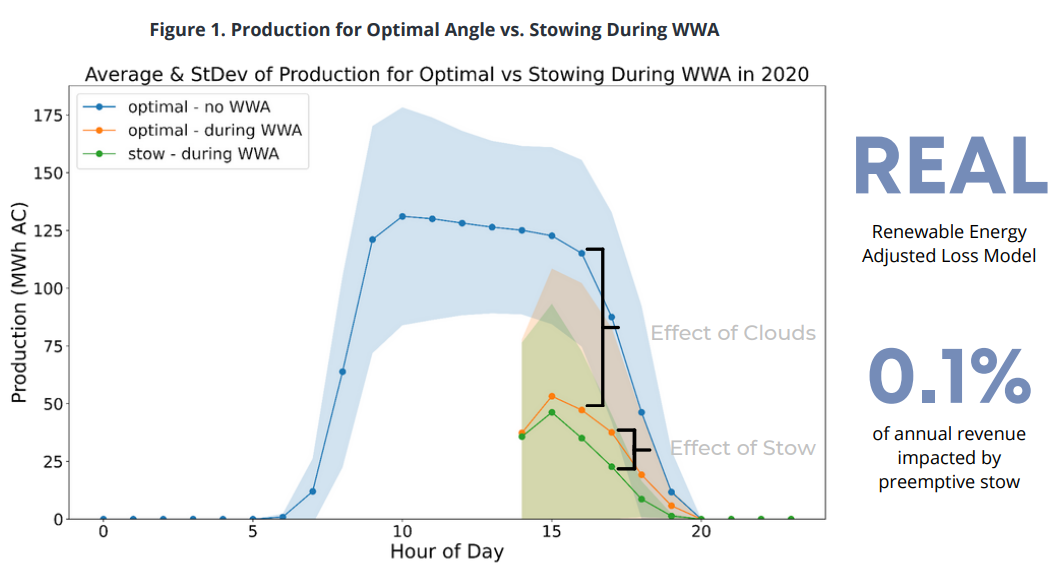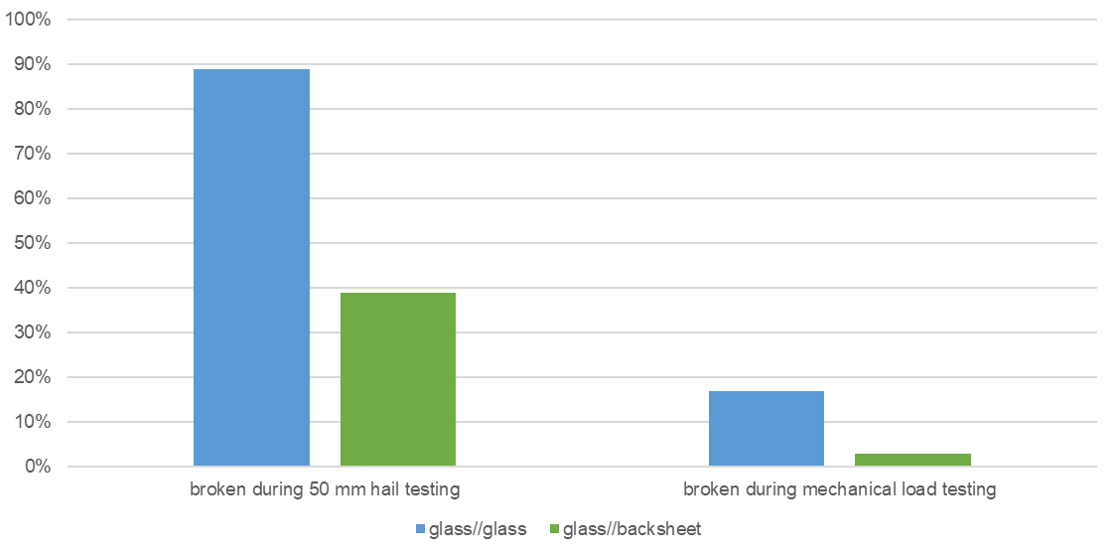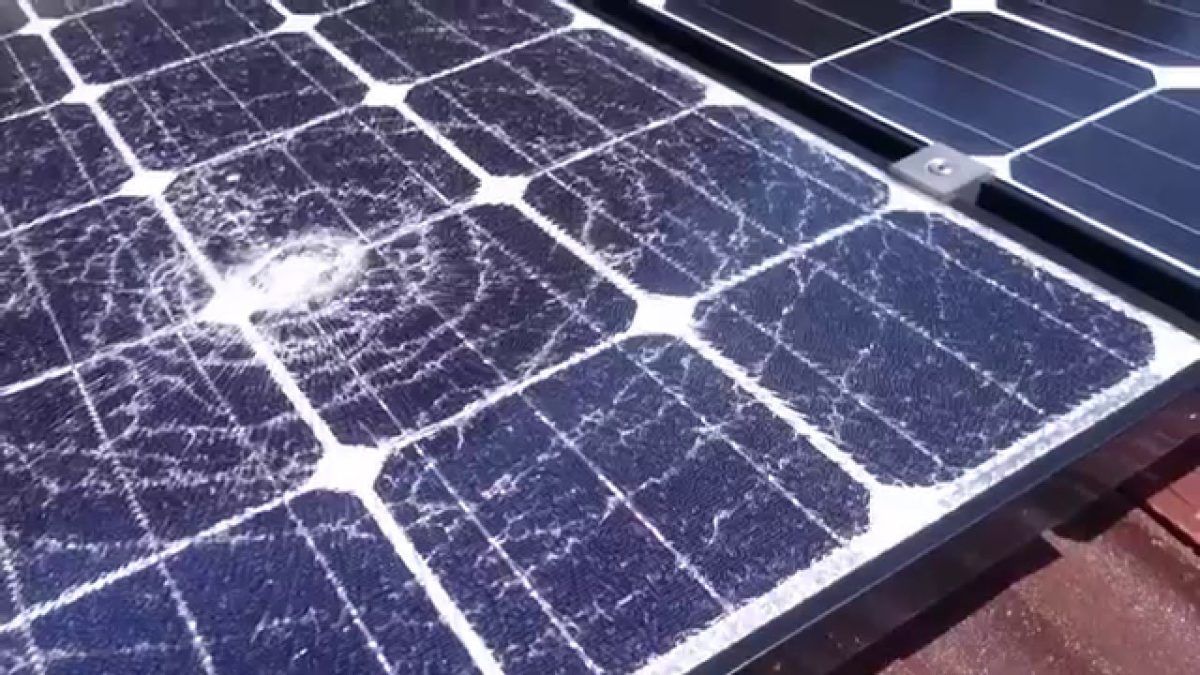The solar industry is forecast to build as much capacity in the next five years as it has over the previous two decades. As the industry matures, risk assessments support the build out of bankable projects that perform at a high level.
This is the motivation behind the annual kWh Analytics Solar Risk Assessment report, now in its fifth year. In the 2023 report, the firm highlights key risks in extreme weather, finance, and asset operations.
“Mitigation of these risks will be critical to our industry’s shared goal: investment of capital into solar to attain sustainable growth,” said Jason Kaminsky, chief executive officer, kWh Analytics. “Doing so will require industry leaders to continue working together as new environmental, technological, legislative, and economic challenges arise.”
1) Proactive hail stow program can reduce property insurance premiums
Hail is an increasingly prominent issue for PV assets. As more sites are built in the central U.S. “hailstorm alley” and modules trend towards larger formats with thinner glass, the risk for significant damage increases.
Tilting modules to a stowed position to avoid direct hail impact can protect them. However, the stow process is often delayed until hail starts falling, diminishing the effectiveness of the protective measure.

Due to this, a predictive, proactive approach to hail stowing is recommended by many asset operators. Other industry members push against this idea, arguing that hail stowing ahead of time diminishes the total output of the solar array, missing out on productive hours with the optimal angle.
kWh Analytics modeled this scenario, comparing proactive stowing with a no-stow method. Assuming a $22/MWh PPA, moving into hail stow during predicted hail events throughout the year led to a total production loss of $12,000, or 0.1% of the $9.75 million of estimated annual revenue. Meanwhile, this stow program would result in a property insurance premium reduction.

“The choice is clear: stow early and stow often when there is a chance of severe weather near your PV project,” said Nicole Thompson, data scientist, kWh Analytics.
2) Tempered-glass modules are twice as resilient to hail as heat-strengthened glass modules
Renewable Energy Test Center (RETC) runs hail durability tests on various module formats. After a three-year test, the firm found that PV modules with a 3.2 mm tempered front glass over a polymer backsheet are approximately twice as resilient to impact as dual-glass modules with 2.0 mm heat-strengthened glass.
“Using RETC’s HDT (Hail Durability Test) data to identify and select hail-resilient modules, stakeholders can significantly reduce financial risk exposure in hail-prone regions,” said Cherif Kedir, president and chief executive officer, RETC.
“Moreover, hail risk mitigation specialists like VDE Americas can use these impact resiliency data to inform probabilistic financial loss estimates that also consider site-specific hailstorm severity and frequency, tracker-specific defensive stow capabilities, and operator-specific weather-alert response protocols,” said Kedir.
Watch our pv magazine webinar on hail risk mitigation with RETC’s Cherif Kedir and VDE America’s John Sedgwick.
3) Glass/glass modules break twice as much as glass/backsheet
Glass/glass (G//G) modules are gaining popularity due to an industry preference for bifacial modules and are being adopted due to concerns with glass/backsheet (G//BS) reliability. However, G//G modules have been showing risks in breakage from impacts.

“While we have observed that G//G modules have lower mean and median power degradation than G//BS modules in thermal cycling, damp heat, and potential-induced degradation testing, the results for two other critical durability tests present breakage concerns for G//G modules,” said Tristain Erion-Lorico, vice president of sales and marketing, PVEL.
Results from PVEL’s hail stress sequence testing, which launches ice balls at module surfaces, show that 89% of G//G modules experienced broken glass during testing, compared to only 39% for G//BS modules. PVEL’s mechanical stress tests also found a higher rate of breakage for G//G modules.
“Current G//G module designs may not be suited for extreme hail or heavy wind/snow locations. As discussed further in PVEL’s 2023 PV Module Reliability Scorecard, extended testing helps determine which modules to procure for long-term project success,” said Erion-Lorico.
This article, the first of a three-part series, will focus on the extreme weather risks, and next up, pv magazine USA will highlight kWh Analytics’ risk warnings for financial modeling and asset operations.
This content is protected by copyright and may not be reused. If you want to cooperate with us and would like to reuse some of our content, please contact: editors@pv-magazine.com.









By submitting this form you agree to pv magazine using your data for the purposes of publishing your comment.
Your personal data will only be disclosed or otherwise transmitted to third parties for the purposes of spam filtering or if this is necessary for technical maintenance of the website. Any other transfer to third parties will not take place unless this is justified on the basis of applicable data protection regulations or if pv magazine is legally obliged to do so.
You may revoke this consent at any time with effect for the future, in which case your personal data will be deleted immediately. Otherwise, your data will be deleted if pv magazine has processed your request or the purpose of data storage is fulfilled.
Further information on data privacy can be found in our Data Protection Policy.